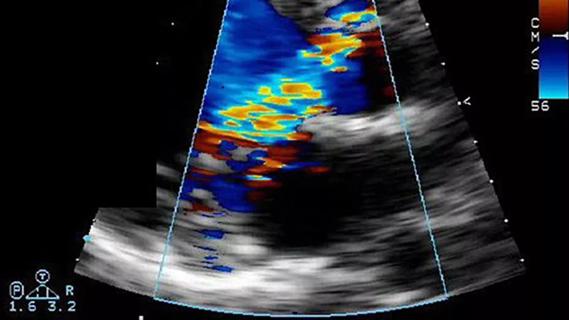Nurses learn that younger patients are less compliant

About half of all patients diagnosed with chronic illnesses do not adhere to their prescribed medication regimen (Brown & Buffell 2011; US stat.). This can be due, in part, to the complexity of needing to take several medications at varying times. Unfortunately, serious health complications can ensue if medication regimens are not followed.
Advertisement
Cleveland Clinic is a non-profit academic medical center. Advertising on our site helps support our mission. We do not endorse non-Cleveland Clinic products or services. Policy
So when Jayne Rosenberger, BSN, RN, a critical care and emergency department nurse at Cleveland Clinic’s Hillcrest Hospital, noticed many of the cardiology patients she saw weren’t taking their prescribed medications, she decided something needed to be done.
Initially, Rosenberger thought color-coding the prescription bottles would make a difference. By creating differences in the way prescription pill bottles looked, she thought it might be easier for patients to recognize different medications and take them as directed. When she brought the issue to a nursing research workshop, however, she realized that before coming up with a solution, she needed to know more about the problem and its scope.
Rosenberger decided, along with her mentor Esther Bernhofer, PhD, RN-BC, Senior Nurse Researcher, Office of Nursing Research and Innovation, to investigate.
Upon securing the necessary approvals to conduct research on medication adherence, Rosenberger used a valid, reliable, simple questionnaire to answer research questions. Patients were enrolled from November 2013 to March 2014 from the busy outpatient cardiology department at Hillcrest Hospital. She and two other coinvestigators approached patients who met inclusion criteria (patients had to be on at least four different medications) after they completed their appointment with a healthcare provider, to request participation.
Of 634 patients approached, 304 agreed to be interviewed — 208 men and 96 women. Mean age was 72 years. Participants provided demographic and current medication information and completed a medication adherence scale and a tool on the complexity of the medication regimen.
Advertisement
Bernhofer analyzed the data and was surprised at the findings: Younger adults were less adherent than older adults in taking their medications. Also, patients with higher education levels were less adherent in taking their medications than the patients with fewer years of education.
“Our expectation was turned on its head,” says Rosenberger. She and her colleagues had anticipated the findings would be the opposite.
“This proves it’s good to know what the problem is before you decide on an intervention,” she adds. “And sometimes the research findings create more questions.”
Rosenberger’s original proposed intervention of color-coding the prescription bottles was geared toward helping older patients. Now, she says, the intervention may need to be something more high-tech to appeal to younger, busy patients who may not be adhering to medication regimens for a variety of reasons.
She and her colleagues are working on the submission of a manuscript that summarizes their findings in a peer reviewed nursing journal.
Advertisement
Advertisement

A sampling of outcome and volume data from our Heart & Vascular Institute

Concomitant AF ablation and LAA occlusion strongly endorsed during elective heart surgery

Large retrospective study supports its addition to BAV repair toolbox at expert centers

Young age, solid tumor, high uptake on PET and KRAS mutation signal risk, suggest need for lobectomy

Surprise findings argue for caution about testosterone use in men at risk for fracture

Residual AR related to severe preoperative AR increases risk of progression, need for reoperation

Findings support emphasis on markers of frailty related to, but not dependent on, age

Provides option for patients previously deemed anatomically unsuitable